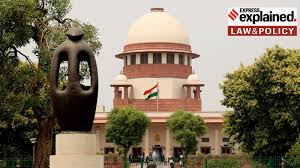Judiciary in Crisis and the Digital Transformation of India

- 23 Jan 2025
In News:
The Indian judiciary is grappling with an unprecedented backlog of cases, while India’s digital economy is witnessing exponential growth, promising to be a key driver of future economic expansion. Simultaneously, India's strides in the space sector and emerging technologies signal its increasing role as a global innovator.
The Crisis of Judicial Pendency in India
- Background: The Supreme Court recently permitted High Courts to appoint ad-hoc retired judges under Article 224A to address the mounting pendency of cases. This move revives a constitutional provision that had remained dormant, with only three recorded instances of its use.
- Scale of Backlog:
- As of January 2025, over 62 lakh cases are pending in High Courts.
- Nearly 4 crore cases are pending in subordinate courts.
- 30% of High Court judicial positions remain vacant.
- Reasons for Pendency
- Insufficient Judicial Strength: Low judge-to-population ratio.
- Infrastructure Deficit: Poor court facilities, especially in rural areas.
- Administrative Delays: Outdated systems and slow bureaucratic processing.
- Rising Litigation: Increase in public awareness and socio-economic issues.
- Adjournments & Procedural Delays: Inefficient court practices.
- Vacancies in Appointments: Delay in filling judicial posts due to the standoff between executive and judiciary.
Constitutional Provision: Article 224A
- Enables High Courts to appoint retired judges temporarily with the President’s consent.
- Judges appointed under this article have full powers and jurisdiction of a regular High Court judge.
- Supreme Court in Lok Prahari v. Union of India (2021) provided guidelines for such appointments, including limiting it to instances where judicial vacancies are not more than 20%.
Judicial Appointments Debate: Collegium vs. NJAC
- Collegium System
- CJI + Four senior-most judges decide appointments.
- Criticized for lack of transparency, nepotism, and non-accountability.
- National Judicial Appointments Commission (NJAC)
- Proposed inclusion of judiciary, executive, and civil society (2 eminent persons).
- Struck down by SC in 2015 to preserve judicial independence.
- Current Debate: Rising demands for a reformed NJAC to bring in accountability while retaining independence.
Global Models of Judicial Appointments
Country System Key Feature
UK Judicial Appointments Commission Transparent, includes laypersons
South Africa Judicial Service Commission Diverse representation: judiciary, politicians, academics
France High Council of Judiciary Balanced approach with civil society input
Impacts of Judicial Delay
- Delayed Justice: Undermines public trust.
- Overcrowded Prisons: Over 70% of inmates are undertrials; prisons operate at 114% capacity.
- Economic Costs: Delays in dispute resolution hamper business environment and economic efficiency.
- Judicial Burnout: Overburdened judges impact quality of judgments.
Addressing Judicial Pendency
- Short-Term Measures
- Appointment of Ad-Hoc Judges under Article 224A.
- Fast Track Courts for specific offenses (e.g., crimes against women, corruption).
- Long-Term Reforms
- Reforming Judicial Appointments: Transparent and accountable system through restructured NJAC.
- Enhancing Collegium Transparency: Clear criteria and public disclosure.
- Promoting ADR Mechanisms: Arbitration, mediation, and conciliation to reduce court burden.
- Judicial Infrastructure Development: More courtrooms, modern facilities, and digitalization.
Way Forward
Judicial Reform
- Strengthen judicial accountability while maintaining independence.
- Incorporate global best practices in appointment systems.
- Promote Alternative Dispute Resolution (ADR) and digitization of court processes
